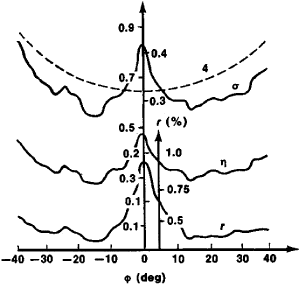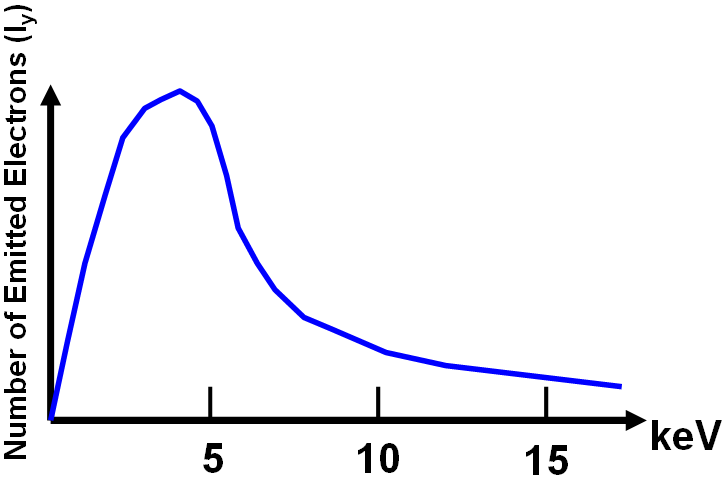=================================================================================
Electron emission due to irradiation of electron beam is quantitatively characterized by the coefficient of electron emission, σ = iy/ii where iy is the current formed by emitted electrons and ii is the current of incident electron beam. The emission current includes backscattering and secondary electrons. Therefore, iy is given by
iy = ie + iin + iδ ------------------------------------------------------- [4815]
ie, iin, iδ are elastic and inelastic backscattering electrons, and secondary electrons, respectively.
The coefficient σ depends on the energy (E0) of incident electron beam, angle of incident electron beam, chemical composition, and state of the irradiated sample’s surface.
Single crystals are anisotropic with respect to the direction of moving electrons. During the electron motion along the channels of crystal structures formed by closely packed chains of atoms, the probability of electron scattering and atom ionization increases (so called channeling effect). In addition, electron diffraction in the crystal lattice is observed. As a result of the two phenomena, the dependence of σ(E0) on the angle of the incident electron beam has a complex shape, with several maxima and minima as shown in Figure 4815a). Furthermore, the coefficients of σ usually given for polycrystals are usually averaged over various directions.

Figure 4815a. Dependence of σ on the angle (Φ) of incident electron beam for single silicon crystals at a voltage of 1 keV. Note that the η (coefficient of inelastic backscattering electrons) and r (coefficient of inelastic backscattering electrons) are discussed on the relevant pages of the book.
Figure 4815b shows the total number (current) of electrons (Iy) emitted as a function of the energy of incident electron beam. As we can see, Iy decreases when the energy of incident electron beam increases.

Figure 4815b. Total number of electrons emitted as a function of the energy of incident electron beam.
|

